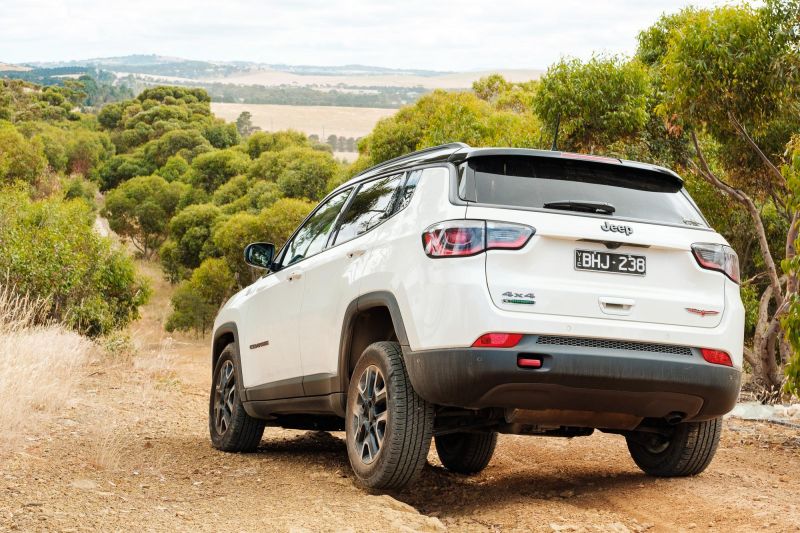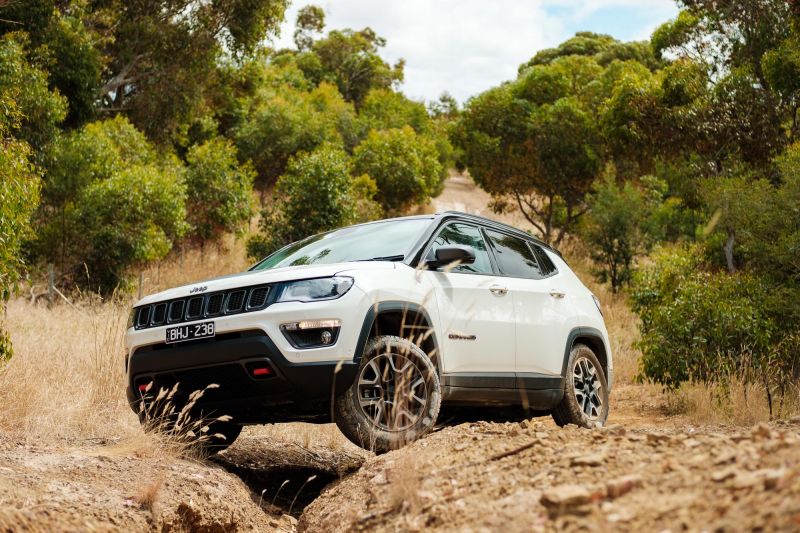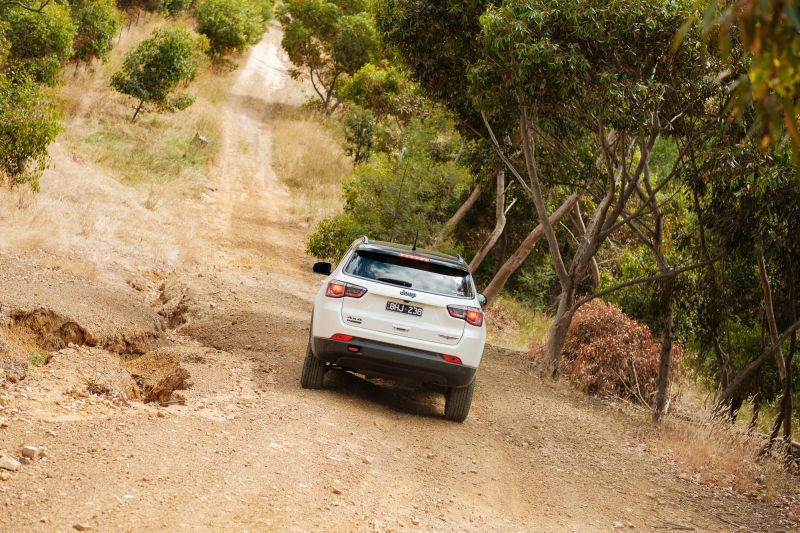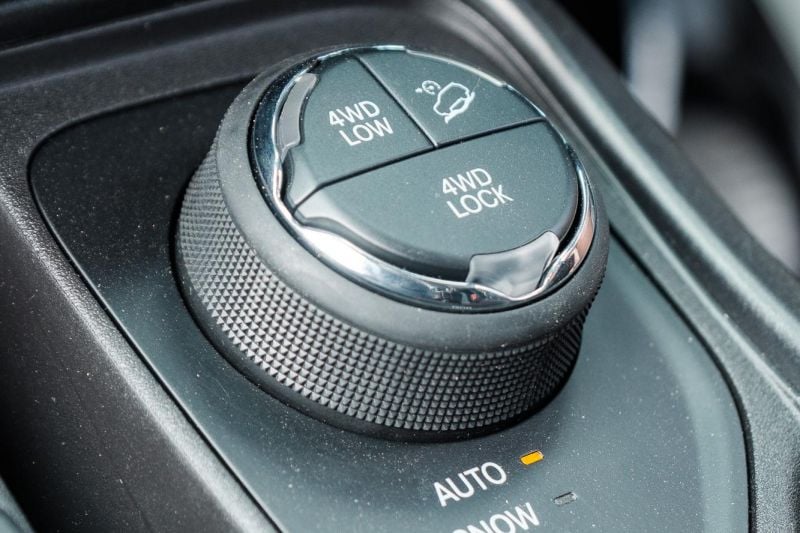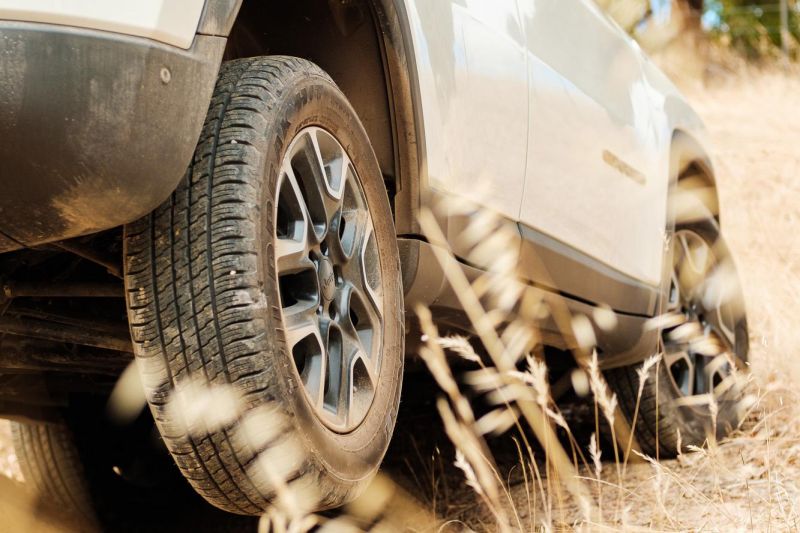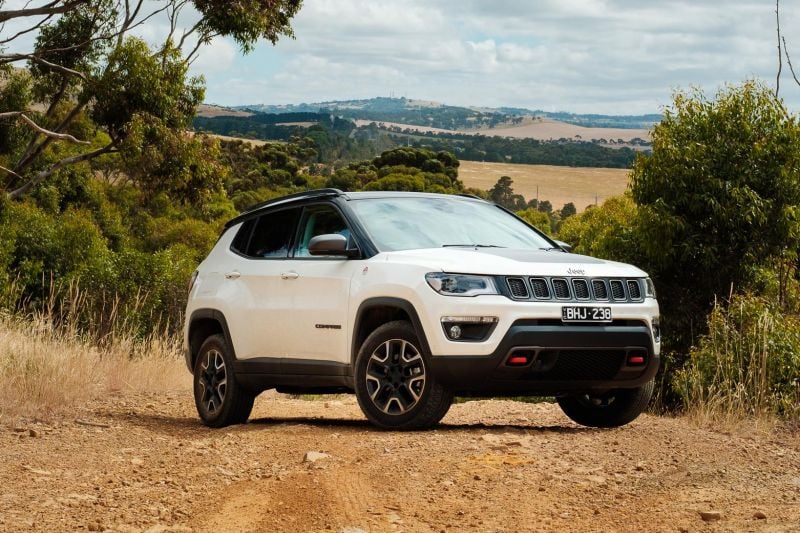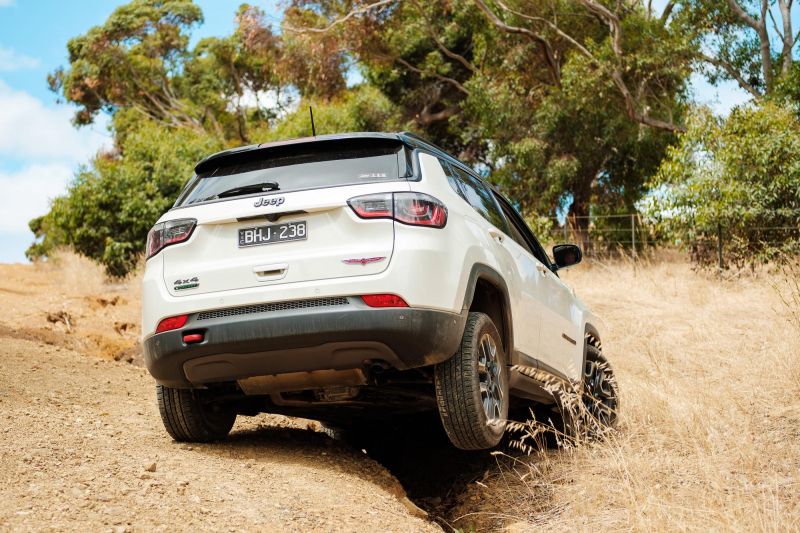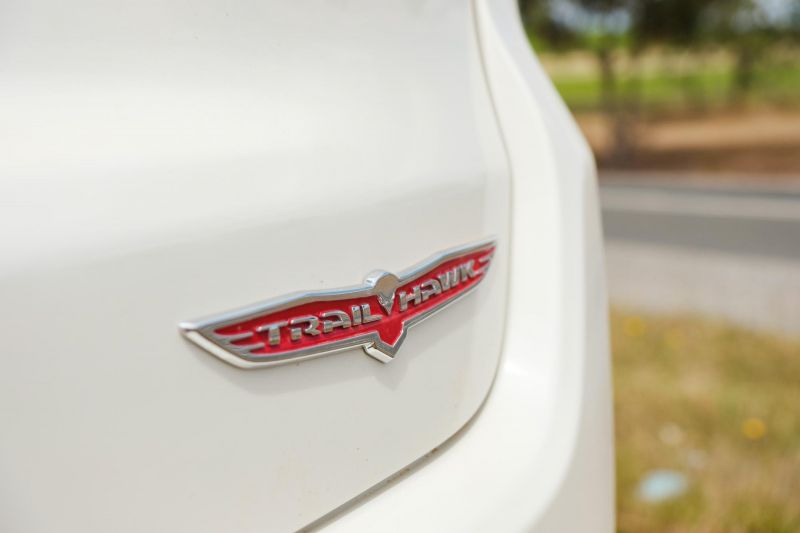The Jeep Compass Trailhawk is the range-topping Compass, and is clearly differentiated by a small badge standing out proudly in red and silver with just two words – ‘Trail Rated’.
Sure, there are a few more visual items but the ‘Trail Rated’ moniker sends a clear message this beast sits well above (literally, with a taller off-road suspension) the other Compass models as a specialised off-roader.
Sometimes compared to a Suzuki Jimny for its small size and apparent off-road ability, let’s see if the red badge holds up and the Trailhawk is more than a typical all-wheel drive SUV when it comes to off-roading.
When you do go off-roading it’s highly likely at some point you’re going to get stuck. Thankfully, the other standout red items on the Trailhawk are dedicated front and rear recovery points.
Jeep learned a hard lesson with certain earlier models; the inclusion of, or ability to retrofit, recovery points is an integral component of a real four-wheel drive.
So as an off-roading nut, I’m impressed to see the Trailhawk comes preprepared for real off-road conditions with two front and one rear recovery point.
It was difficult to find any information on the rating of these recovery points, but they are held in place on the frame with three bolts and it’s advised to use a bridle to link the front two mounts and share the load for more difficult recoveries.
Other important off-road items separating the Trailhawk from other Compass models are the raised suspension (and associated extra clearance), and underbody protection.
You also get fancy electronic traction selection modes including Snow, Sand, Mud, and Rock, and buttons for Low 4WD, hill-descent control and 4WD Lock.
On paper it looks the goods. The Trail Rated emblem is there and it shares its driveline, four-wheel drive system, and engine with the Jeep Renegade, so it should have the performance off-road. Let’s see!
Off-road
The Compass Trailhawk comes with a shiny Trail Rated badge and is heralded as a four-wheel drive, but it simply isn’t.
It certainly isn’t your average, run-of-the-mill SUV or soft roader, either. Let’s take a closer look to find out exactly where it sits and what it is capable of.
There are some well-named buttons to the right of the gear selector but far from activating low-range, the 4WD Low button simply locks the transmission into first gear. The Trailhawk doesn’t have proper low-range and hence, it’s not a true 4×4.
There is a 4WD Lock button, but all it does is engage the drive to the rear. By definition that is a transfer case (as it transfers drive to the front and rear differentials) but in essence it’s not a true transfer case with dual-range gearing
It’s simply a single-speed power transfer unit located with the front differential.
It also has independent front- (IFS) and rear (IRS) suspension, which dramatically limits articulation and unbalances the vehicle slightly as there is no heavy rear diff assembly (or mid-mounted transmission and transfer case) to counteract the weight of the engine at the front.
The result is that the Compass Trailhawk will lift a rear wheel and lose traction on medium 4×4 trails, when crossing gutters, or over uneven sections of terrain.
The upside is that the IFS and IRS react well to dirt roads at speed including corrugations. It’s remarkably stable and nice to drive on dirt at 100km/h.
The mode selector offers varying degrees of traction control and teamed with the 4WD Low and 4WD Lock (locked in first gear), you get improved control and drivability. The limited suspension travel is still its undoing in offering real traction and forward progress in tougher 4×4 situations.
Hill-descent control is another feature that doesn’t really hit the nail on the head because of the lack of low-range gearing. The system, much like traction control, is reactive and not predictive.
The vehicle skids and lurches and really seems to run away with first gear not providing enough (reverse torque) engine braking.
It’s not all bad news though – with the increased ride height and clearance, improved approach and departure angles, and underbody protection offering more capability and confidence when venturing onto dirt roads and forest trails, or basic water crossings with its fording depth rating of 480mm.
With that said, underbody sound deadening is fine for normal conditions but seems ineffective when it comes to dampening the bangs and clangs when rocks and other obstacles come in contact with the protection plates.
It’s par for the course for an experienced off-roader but I dare say it would be unnerving and concerning for an inexperienced driver venturing off-road for the first time.
What’s under the bonnet
The nine-speed automatic transmission in the Trailhawk is fronted by a 2.0-litre turbo-diesel engine. Outputs are rated at 125kW (3750rpm) and 350Nm (1750rpm).
It’s no rocket on- or off-road but it gets the job done effectively and relatively efficiently – Jeep claims a 0-100 time of 9.7 seconds, for reference.
The real winner in the combination though is the transmission which shifts effortlessly to keep the engine well within its power band. Sadly the nine-speed gets no use or recognition in the sphere of off-road performance as it gets locked into first gear.
With that said, at speed and well before the 4WD Low and Lock modes are required, the transmission does a great job keeping power to the wheels on dirt and gravel roads where traction and control can be an issue.
Mod-ability
There is not really much available for the Compass Trailhawk when it comes to accessories, especially within Australia due to the small numbers sold.
In the USA, a small range of nudge bars and a bull bar of some sorts are available, and there’s a variety of suspension kits on the market. These will offer further lift and clearance but not really any great improvement in articulation.
That means there are no real measurable gains off-road, but the improved clearance means you can fit larger (up to 30-inch) and more aggressive tyres, which will enhance its off-road ability somewhat.
CarExpert’s Take on the Jeep Compass Trailhawk
Overall the Jeep Compass Trailhawk may not be every hardcore off-roader’s dream, but it’s hard to argue it doesn’t have a place in the market – a very relevant, important place.
Not everyone needs to tow a huge boat or caravan. Not everyone needs to climb the steepest mountain, cross the deepest river, or conquer the toughest mud hole.
An increasing number of people are keen to enjoy the outdoors, venture slightly off the black top in comfort and style with the confidence they can go further, tackle something harder, or have more fun than what you could have done with your usual car or soft-roader.
The Trail Rated badge may be a touch misleading, but the Compass Trailhawk has a bit to offer. If you did need or want more, you would simply go straight for a Wrangler or Gladiator.
Far from being compared to the Jimny, the Jeep Compass Trailhawk is in a class of its own. If you needed to draw comparisons, it’s more akin to the old Land Rover Freelander or the more rugged original versions of the Subaru Forester.
It definitely has its place in the market and given the features it has (as long as you’re aware of the limitations), it would make a comfortable and capable touring vehicle for long-distance outback hauls or short getaways with adventure in mind.
Click the images for the full gallery





